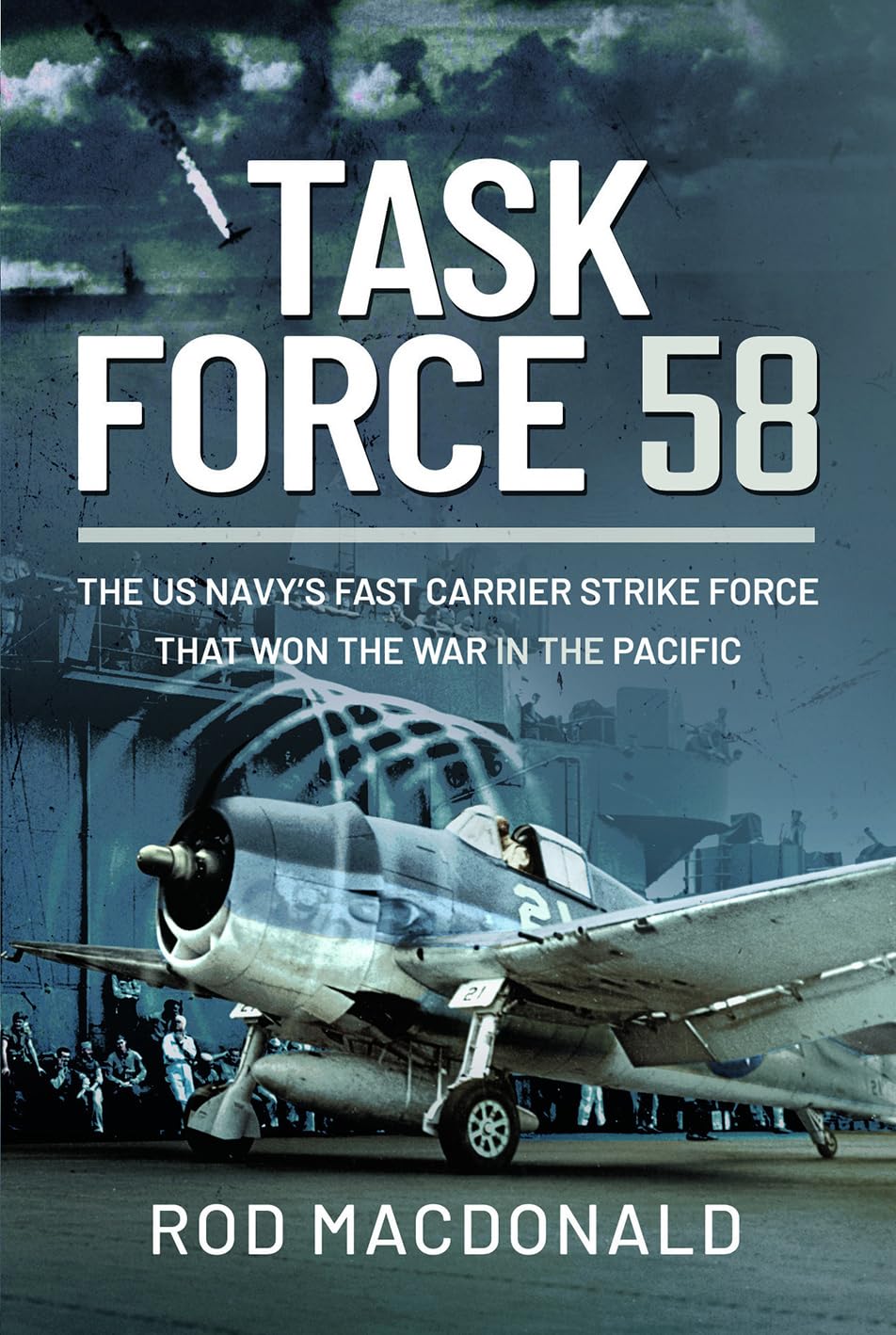Task Force 58: The US Navy's Fast Carrier Strike Force that Won the War in the Pacific
By Rod Macdonald

In this rather large volume, Rod Macdonald tells the entire story of the fast carrier forces of the United States and Japan from December 7, 1941 to September 2, 1945. The book actually begins with the Washington Naval Treaty and the subsequent international treaties intended to restrict both the number of specific classes of ships allowed, and the size of those ships - with a focus on aircraft carriers. While the Washington Naval Treaty restricted the number of new battleships and battle cruisers, but also permitted the United States, Britain and Japan to convert battleships and battlecruisers under construction into aircraft carriers. This occurred at a time when the first purpose-built carrier, Japan's miniscule 7,000-ton Hosho, was just coming into service. No navy had carriers anywhere near the size of those created by conversion of the battleships and battlecruisers that would have had to have been scrapped under the terms of the Washington Treaty but could have a size cap above 33,000 tons. This led to Japan's Akagi and Kaga, and the American carriers Lexingtonand Saratoga.
The author then looks at the 1930s carriers built under treaty limitations, the ships that led the fight early in the war, such as the American Yorktown and Enterprise and the Japanese Soryu and Hiryu. The first post-treaty American fast carrier was USS Essex, commissioned on December 31, 1942. Not much more than a year later, more than a dozen Essex-class carriers were in combat. By the time of the Japanese surrender in 19'45, fourteen Essex-class had seen combat, and another twenty-four were completed and saw naval service after the war. Also included with the light fast carriers, based on the hull of the Cleveland-class light cruisers - nine of them were built and all saw action. The book also looks at the Japanese treaty and post-treaty carriers, several of which were superb warships.
Going point by point through the history of the introduction and use of the American fast carriers and their Japanese counterparts, this book provides a tight, well-written and clearly well-researched history of fast-carrier warfare in the Pacific. There are other books covering the carrier war, by some prominent naval historians, and this new book should be included among the best one-volume studies of this history. What it successfully presents is a concise, authoritative history of the carrier war, with that added twist of having been written by someone who has personally dived on sunken relics of that incredible war.
Highly recommended for those who want to read comprehensive histories of this war that cemented America's role as a world superpower and global policeman; a role that lasted through the end of the century and beyond.
- Barnsley: Frontline Books, 2021
- Annapolis: Naval Institute Press, 2021
- 6-1/2” x 9-1/2”, hardcover, xvi + 504 pages
- Photographs, appendix, notes, bibliography, index. $54.95
- ISBN: 9781399007573
Reviewed by: Michael O'Brien, San Francisco, California
